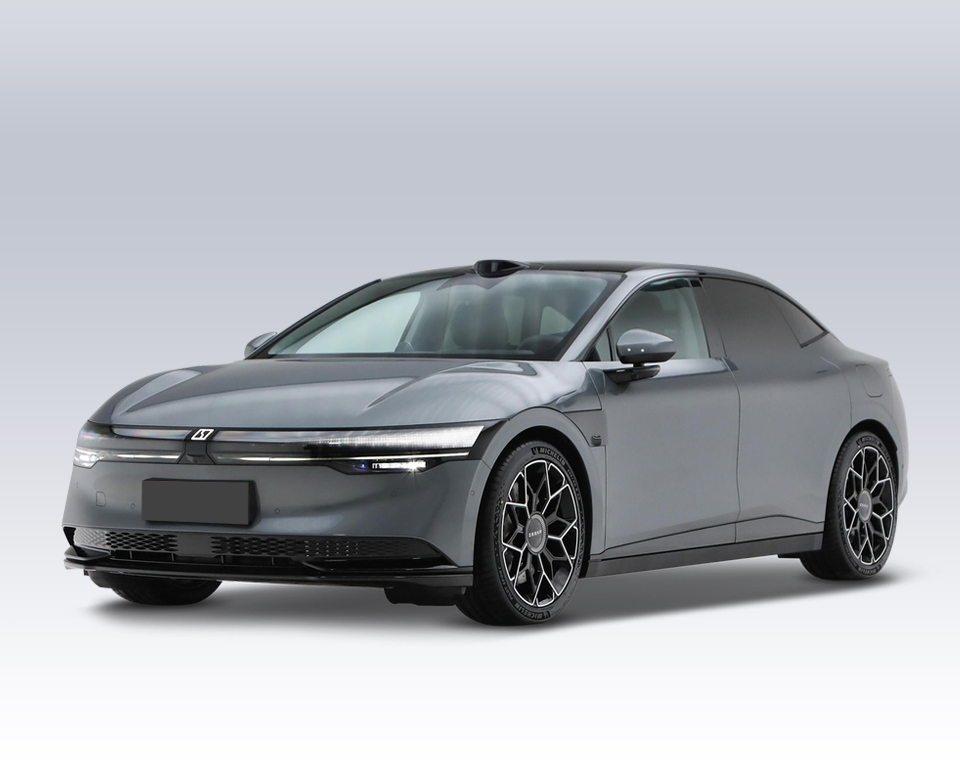How to Properly Maintain New Energy Electric Vehicles? Daily Maintenance Methods and Schedule Planning
With the growing popularity of new energy vehicles (EVs) worldwide, electric vehicles have become the first choice for many consumers due to their excellent performance and environmental benefits. However, as advanced vehicles powered by batteries, proper maintenance not only extends their lifespan but also ensures driving safety and maintains efficient power output. Understanding and following the maintenance requirements for EVs will help car owners avoid potential problems and maximize the driving experience. This article will help you sort through essential knowledge about EV maintenance, providing you with specific daily maintenance methods, as well as detailed maintenance checks and schedule planning when visiting service centers.

1. Daily Maintenance
Every 10,000 kilometers or every 12 months: Based on mileage or time, it is generally recommended to perform a full maintenance every 10,000 kilometers or every 12 months.
Daily Checks: Performing simple daily checks can help you detect potential issues early, ensuring driving safety and extending the vehicle’s lifespan.
1.Battery Level Check
Frequency: Before every drive or after charging.
Content: Ensure the battery has enough power to support your trip, especially before long-distance travel. Avoid letting the battery level drop below 20% for extended periods to prevent deep discharges. Similarly, avoid frequently charging to 100%, except before long trips.
Additional Advice: If you notice the battery depleting quickly or charging times becoming significantly longer, it’s advisable to contact a service center for an inspection.
2.Tire Pressure Check
Frequency: At least once a month, or after significant temperature changes.
Content: Use a tire pressure gauge to check the pressure, ensuring it matches the recommended pressure levels in the vehicle manual (front and rear tires often have different pressure requirements). Low tire pressure increases energy consumption and accelerates tire wear, while overinflated tires may affect vehicle stability and comfort.
Additional Advice: Check tire tread wear as well. If wear is uneven or tread depth is insufficient, tire replacement may be necessary.
3.Lights and Electronic Equipment Check
Frequency: Weekly or before any long trips.
Content: Turn on the vehicle’s lights and check that the high beams, low beams, turn signals, and fog lights are working properly. Ensure all internal electronic devices, such as the central display, dashboard, audio system, and air conditioning are functioning without any faults or error messages.
Additional Advice: If the electronic systems are slow to respond or lights are dimming, this could indicate battery or electrical issues, requiring further inspection.
4.Brake System Check
Frequency: A simple check before each drive and a more thorough inspection once a month.
Content: Before or during driving, pay attention to brake responsiveness and check for any unusual sounds. Make sure the brake pedal responds correctly and fully. If you feel vibrations when braking or need more force to stop the car, the brake pads may be worn or brake fluid levels may be low.
Additional Advice: Since the brake system is crucial for safety, it’s recommended to have it thoroughly checked at a service center every 6 months or 10,000 kilometers.

5.Wiper and Windshield Washer Fluid Check
Frequency: Monthly or before rainy or snowy weather.
Content: Check if the wipers are in good condition, without damage or aging signs. Make sure they effectively clear water and debris from the windshield. Also, check the washer fluid level and ensure there is enough liquid.
Additional Advice: If the wipers make noise or fail to clean the windshield properly, it is advisable to replace them immediately.
6.Body Inspection
Frequency: Monthly.
Content: Inspect the car body for noticeable scratches, dents, or signs of corrosion. If the vehicle is often exposed to outdoor conditions, regular washing and occasional waxing can protect the paint.
Additional Advice: Pay special attention to parts like aluminum alloy wheels, which are more prone to external damage and require regular cleaning and maintenance.
7.Air Conditioning and Filtration System Check
Frequency: Monthly or at seasonal changes.
Content: Turn on the air conditioning and ensure smooth airflow without any unusual odors. If airflow is weak or there are unpleasant smells, the air filter may need replacing.
Additional Advice: Air filters should generally be replaced annually, especially in dusty areas or regions with poor air quality.
8.Charging Cable and Port Check
Frequency: Before each charging session.
Content: Ensure the charging cable and port are intact, without burn marks, cracks, or wear. If the charging connector overheats, stop charging immediately and inspect the equipment.
Additional Advice: Use original or certified charging equipment to avoid potential risks from substandard or faulty chargers.

2. Maintenance Schedule
- Basic Maintenance: At 10,000 kilometers or 6 months, basic maintenance mainly involves a simple check of the vehicle’s core systems, such as battery health tests, tire wear and pressure adjustment, and electrical system checks to ensure the vehicle’s normal operation.
- Routine Maintenance: At 20,000 kilometers or 12 months, in addition to the basic maintenance items, the motor system and air conditioning system will also be serviced. As the core component of the electric vehicle, the motor requires regular checks to prevent overheating or damage, while the air conditioning system ensures interior air quality and comfort.
- Mid-Term Maintenance: Performed at 40,000 kilometers or 24 months, this includes air filter replacement, motor system checks, battery performance tests, and cooling system maintenance. The cooling system is critical in electric vehicles for regulating battery and motor temperatures to ensure stable performance.
- Deep Maintenance: At 60,000 kilometers or 36 months, deep maintenance becomes necessary. This includes extensive battery performance testing and comprehensive checks of the drivetrain, suspension, and braking systems. If the battery capacity has significantly decreased, replacement may need to be considered.
- Comprehensive Maintenance: At 100,000 kilometers or 5 years, the vehicle has entered its mid-to-late life cycle. Comprehensive maintenance includes evaluating the need for battery replacement and a full inspection of all electronic, mechanical, and software systems for updates and repairs.

Recommended Maintenance Schedule

3. Maintenance Items and Procedures
10,000 km/12 Months (Basic Maintenance)
1.Battery System Check
The battery is the core component of an electric vehicle, and regular battery system checks are crucial. Inspection items include battery charge level, state of charge (SOC), and battery management system (BMS) status. Using professional equipment to test the battery’s performance and capacity can help determine whether further maintenance or replacement is needed. Additionally, the battery’s cooling system should be inspected to prevent overheating and ensure long battery life and stable operation.
2.Brake System Check
The brake system of an electric vehicle consists mainly of regenerative braking and mechanical braking. The brake check includes inspecting the wear of brake pads and brake discs, checking the brake fluid level and condition, and assessing the responsiveness of the braking system. Regular brake fluid replacement and brake pad maintenance are key to safe driving. If the braking system is severely worn, stopping distances may increase, affecting driving safety.
3.Tire Check
Tire inspection includes tire pressure, tread depth, and surface wear. Correct tire pressure improves vehicle range and driving comfort, while excessively worn tires may lead to insufficient grip, affecting vehicle stability. It is recommended to adjust tire pressure regularly and replace tires as necessary, especially for long trips or driving in harsh weather conditions.
4.Electrical System Check
Electric vehicles have complex electrical systems involving onboard electronic devices, lighting, and charging ports. Electrical system checks include verifying that all lights are functioning properly, assessing the operation of in-car electronic devices such as air conditioning and displays, and inspecting the condition of charging ports and cables. Regular electrical system checks help prevent unexpected failures and ensure the reliability of electronic devices while driving.
5.Coolant Check
Coolant is essential for maintaining the temperature of the battery and motor, especially during extended driving or in high-temperature environments. Regularly checking coolant levels and refilling or replacing it as needed can effectively prevent battery overheating. The cooling system in electric vehicles is designed specifically for batteries and electric motors, so special attention should be paid to its maintenance.

20,000 km/24 Months (Intermediate Maintenance)
6.Motor System Check
The motor is the power source of an electric vehicle, and inspecting the motor’s operating condition and lubrication is key to ensuring smooth vehicle operation. Motor checks include noise detection, heat levels, and whether there are abnormal vibrations. Regular maintenance can effectively extend motor efficiency and lifespan, preventing overheating or malfunctions during operation.
7.Air Conditioning System Maintenance
Air conditioning system maintenance includes checking refrigerant levels, cleaning or replacing filters. The air filter in the air conditioning system should be replaced regularly, especially when driving in areas with poor air quality. A properly functioning air conditioning system not only affects interior air quality but also plays a key role in driving comfort.
8.Brake System Maintenance
The brake system is vital for vehicle safety, with electric vehicles relying heavily on both regenerative and traditional mechanical braking. Brake system maintenance includes regularly replacing brake fluid, inspecting the wear of brake pads and brake discs. Regenerative braking reduces the wear on mechanical brake components but still requires regular checks and maintenance to ensure responsiveness and safety, especially during frequent braking or prolonged downhill driving.

3-5 Years (Deep Maintenance)
9.Battery Performance Testing
The battery is the core component of an electric vehicle, and regular battery performance tests help ensure its health. The testing includes checking battery capacity degradation, charging/discharging efficiency, and the functionality of the battery management system. Deep testing with professional equipment can accurately evaluate the battery’s remaining lifespan, preventing issues such as decreased range due to battery aging. This testing is particularly important after three to five years of vehicle use.
10.Suspension System Check
The suspension system ensures vehicle stability and comfort. Inspections cover shock absorbers, springs, and control arms. A suspension check ensures the vehicle maintains good shock absorption and prevents issues such as abnormal chassis noise or vehicle swaying. If the suspension system shows signs of wear or aging, replacing the relevant components is necessary to maintain safety and comfort.
11.Drive System Check
The drive system includes the vehicle’s electric motor, transmission, and related control devices. Checking the drive system focuses on ensuring the electric motor and transmission run smoothly, and that the control system responds normally to avoid issues like jerky movement or reduced transmission efficiency. A well-maintained drive system helps maintain power output and ensures smooth, stable driving.

4. Special Maintenance Considerations
Software Updates:
Every electric vehicle is equipped with an intelligent operating system, and regular software updates ensure the vehicle has the latest safety features and performance optimizations. Software updates can not only fix system vulnerabilities but also add new driver assistance features and enhance the vehicle’s management system efficiency. Keeping vehicle software updated ensures the best driving experience.Battery Charging Habits:
It is recommended to avoid excessive charging and discharging, maintaining the battery level between 20% and 80% to prolong battery life. For detailed information on battery maintenance, refer to the article “How to Properly Maintain Your EV Battery for Longevity: Reasonable Charge-Discharge Cycle.“

By adhering to regular maintenance and practicing proper daily care, you can ensure that your new energy electric vehicle remains in optimal condition, providing long-lasting and high-quality service. Whether it’s battery health management, brake system inspection, or suspension system maintenance, these details will help you enjoy a safer, more comfortable driving experience while embracing green travel. Remember, professional maintenance is the best way to extend your vehicle’s life and improve its driving quality.
Hot China EV Models
Resource Link: More About China EV Cars





